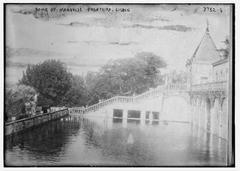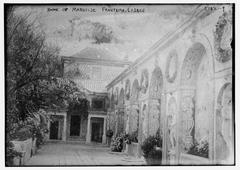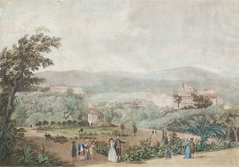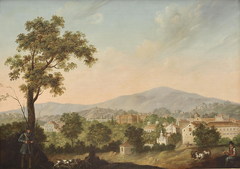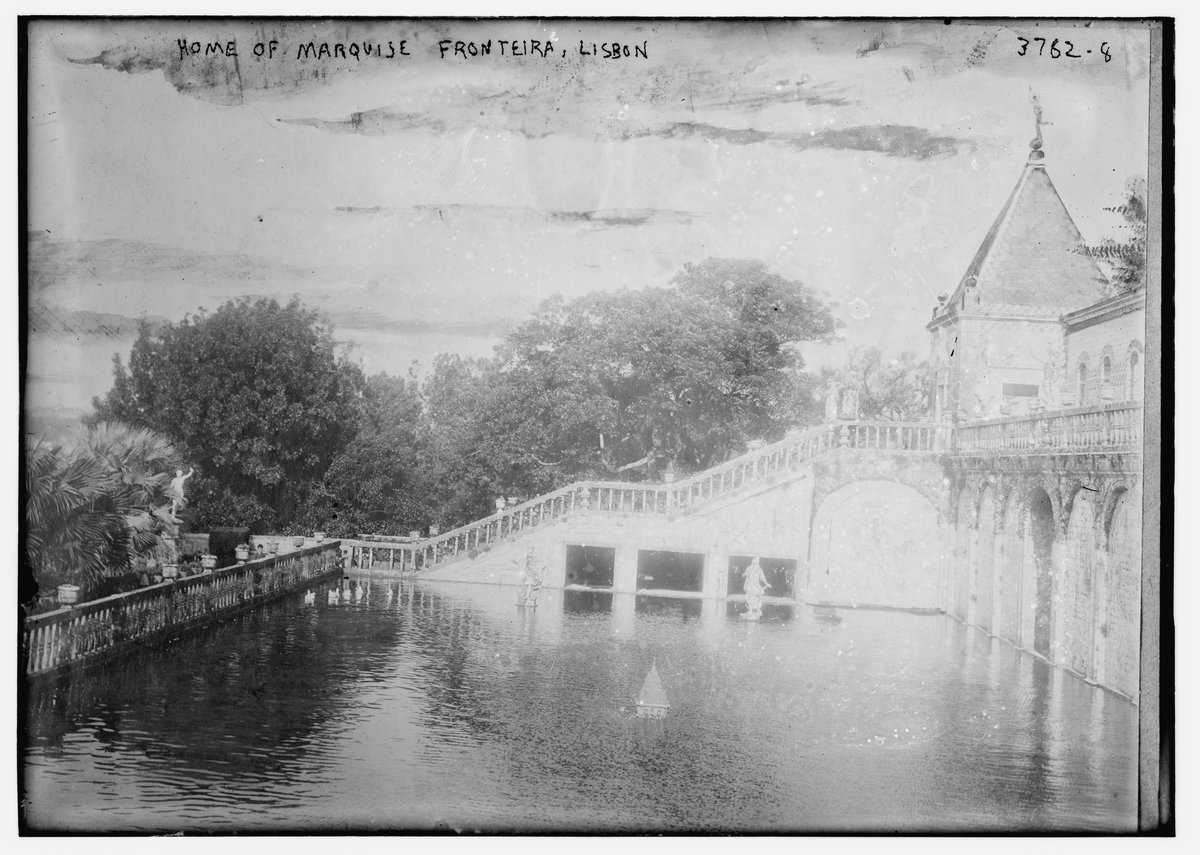
Palace of the Marquises of Fronteira: Visiting Hours, Tickets, and Travel Guide in Lisbon
Date: 14/06/2025
Introduction
The Palace of the Marquises of Fronteira, located in Lisbon’s peaceful Benfica district, is one of Portugal’s finest examples of aristocratic heritage, Baroque artistry, and national history. Built in 1671 by Dom João de Mascarenhas, the first Marquis of Fronteira, this palace was initially a hunting lodge and later transformed into an opulent noble residence. Today, it offers visitors a rare opportunity to experience centuries of Portuguese aristocratic life, stunning architecture, elaborate azulejo tilework, and beautifully landscaped gardens (bonjourlisbonne.fr; Visit Lisboa).
This comprehensive guide provides detailed information on the palace’s origins, architectural and artistic highlights, cultural significance, visiting hours, ticketing, accessibility, guided tours, and practical tips for a memorable visit.
Origins and Historical Development
Commissioned in 1671 after the Portuguese Restoration War (1640–1668), the Palace of the Marquises of Fronteira was constructed as a reward for D. João de Mascarenhas’s loyalty and service to King Afonso VI. Originally a hunting pavilion, it soon evolved into a full-time residence, reflecting the family’s elevated status and Portugal’s renewed independence (bonjourlisbonne.fr; Atlas Obscura).
The palace has been continuously inhabited by the Mascarenhas family for over 350 years, surviving the 1755 Lisbon earthquake and various phases of architectural embellishment, particularly during the 18th century. This continuity makes it one of Lisbon’s best-preserved and most historically significant noble residences (Câmara Municipal de Lisboa).
Architectural and Artistic Significance
Architectural Features
The palace’s architecture seamlessly blends Renaissance, Mannerist, and Baroque influences. Its main structure features a central two-story building with quadrangular towers, a striking Serlian porch, and monumental staircases. The noble or ceremonial floor connects to terraces and galleries, seamlessly integrating indoor and outdoor spaces (baroqueart.museumwnf.org; fronteira-alorna.pt).
Key features include:
- Chapel (1690): Lavishly decorated with polychrome marble and gilded woodwork, exemplifying Baroque splendor.
- Library: Houses rare manuscripts and family archives, reflecting the intellectual pursuits of the Portuguese nobility.
- Gardens: Designed in the Italian Renaissance style with geometric parterres, ornamental ponds, and statues representing the seven classical planets (European Historic Houses).
Azulejo Masterpieces
The palace is world-renowned for its collection of 17th and 18th-century azulejos. These hand-painted tiles tell stories of Portuguese history, mythology, and daily life, showcasing local artistry and cultural exchange with the Mediterranean world (Museu Nacional do Azulejo; Portugal Visitor).
Highlights:
- Sala das Batalhas (Hall of Battles): Azulejo panels depict key battles from the Restoration War, providing both decoration and historical record.
- Panels in Gardens: The azulejo-lined balustrades, fountains, and playful mythological or satirical scenes (such as animals mimicking human behaviors) further enrich the estate’s storytelling (baroqueart.museumwnf.org).
Gardens
The palace grounds, covering 5.5 hectares, are among the most beautiful in Portugal, embodying Baroque landscaping principles:
- Grand Garden: Features a monumental lake, azulejo panels of noble horsemen, and the King’s Gallery with busts of Portuguese monarchs.
- Venus Garden & Casa do Fresco: Accessed by an ornate staircase, this area is decorated with rocaille tiles, exotic trees, and satirical azulejo panels.
- Arts’ Terrace: Dedicated to the Liberal Arts, with marble statues and medallions of Roman emperors (lisbonportugaltourism.com).
Cultural Symbolism and Heritage Value
Aristocratic Identity & National Memory
The palace’s decorative schemes assert both the Mascarenhas family’s and Portugal’s national identity, especially through the Hall of Battles and the busts of Portuguese monarchs (excluding the Habsburg “Philips”), subtly reinforcing the legitimacy of the Braganza dynasty (Visit Portugal).
Artistic Patronage
For centuries, the Mascarenhas family supported leading Portuguese and European artists. The azulejos and statuary reflect classical iconography and Renaissance humanism, emphasizing the family’s erudition and cosmopolitanism (Azulejos de Portugal).
Visiting the Palace: Hours, Tickets, and Practical Information
Location
- Address: Largo São Domingos de Benfica 1, Benfica, Lisbon
- Accessibility: Easily reached by taxi (15–20 min from city center), public buses, or the nearby Sete Rios train station (cityguidelisbon.com).
Opening Hours
- Tuesday to Sunday: 10:00 AM – 5:00 PM (Nov–Mar); 10:00 AM – 6:00 PM (Apr–Oct)
- Closed: Mondays and public holidays
Note: Hours may vary for certain tours or special events; always confirm on the official website before your visit.
Ticket Information
- General Admission: €10
- Reduced (students, seniors): €5
- Children under 6: Free
- Guided Palace Tour: €11 per person (includes interiors)
- Gardens Only: €6 per person
Tickets can be purchased onsite or via the official website. Advance booking is recommended, especially for guided tours.
Guided Tours
- Interior access is only via guided tours, available in Portuguese and English (plus other languages on request).
- Tours last ~50 minutes, departing every 30 minutes. Group sizes are limited for preservation.
- Photography: Not allowed inside; permitted in gardens.
Accessibility
- Mobility: Some wheelchair access in the gardens; palace interiors have stairs and uneven floors.
- Families: Strollers are difficult; baby carriers recommended. Children should be supervised, especially near water features.
Amenities & Visitor Tips
- Restrooms: Available onsite.
- Gift Shop: Offers books and souvenirs.
- No café/restaurant: Plan meals before or after your visit.
- Best time to visit: Weekdays, early mornings for a quieter experience.
Nearby Attractions
- Monsanto Forest Park: Ideal for walks and picnics.
- Ajuda National Palace: Another royal residence nearby.
- Lisbon Zoo: Located in the Sete Rios area.
Visitor Etiquette
- Respect restricted/private areas.
- Maintain quiet during tours.
- Photography is not permitted indoors.
Frequently Asked Questions (FAQ)
Q: What are the visiting hours?
A: Tuesday–Sunday, 10:00–17:00 (Nov–Mar) or 10:00–18:00 (Apr–Oct); closed Mondays and public holidays.
Q: How much are tickets?
A: General admission is €10; reduced rates for students/seniors; children under 6 free. Guided tours are €11; gardens only €6.
Q: Can I buy tickets online?
A: Yes, via the official website; on-site purchase also available.
Q: Is the palace accessible to wheelchairs or strollers?
A: Partially—gardens have some access, but interiors are challenging; strollers not recommended.
Q: Are guided tours available?
A: Yes, in multiple languages. Book in advance during peak times.
Q: Can I take photos?
A: Only in the gardens; photography is prohibited indoors.
Q: What’s nearby?
A: Monsanto Forest Park, Ajuda National Palace, Lisbon Zoo.
Summary and Visitor Tips
The Palace of the Marquises of Fronteira is a remarkable testament to Portugal’s aristocratic and artistic heritage—a living residence with stunning Baroque architecture, magnificent azulejos, and world-class gardens. Advance booking for tours is advised, especially during peak seasons. To enrich your visit, explore nearby attractions, and wear comfortable shoes for the garden strolls. For the latest information and audio-guided experiences, download the Audiala app.
